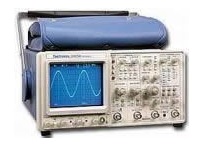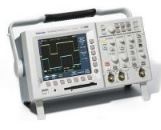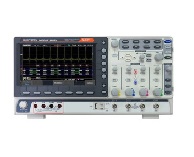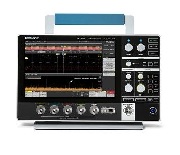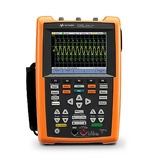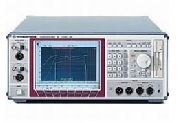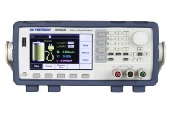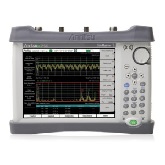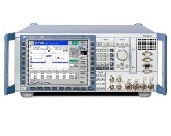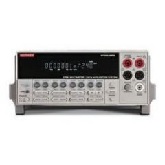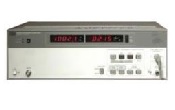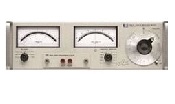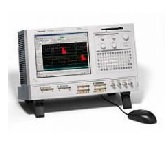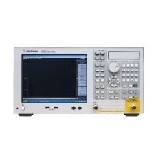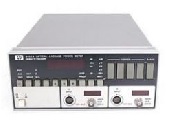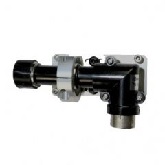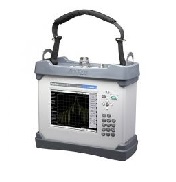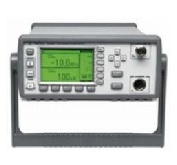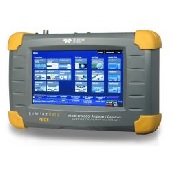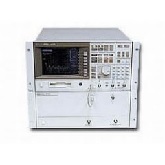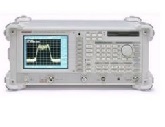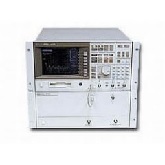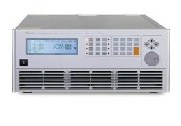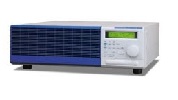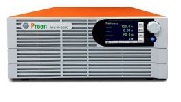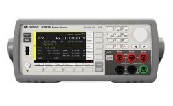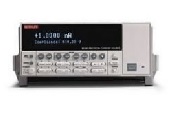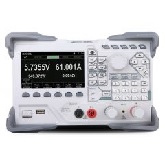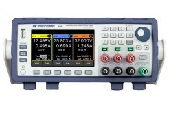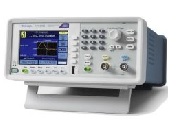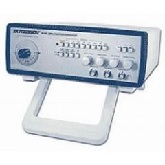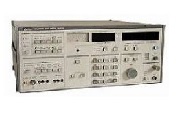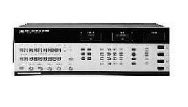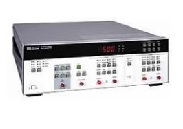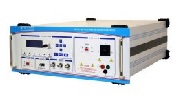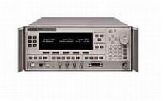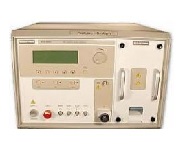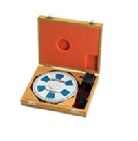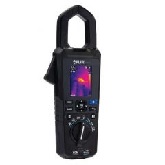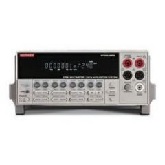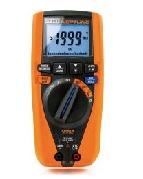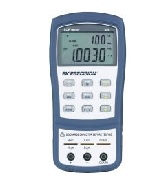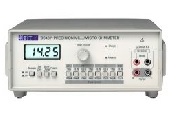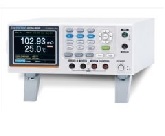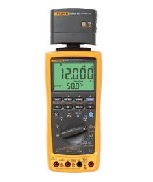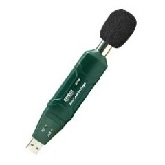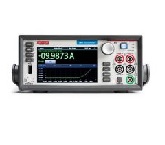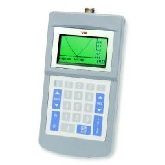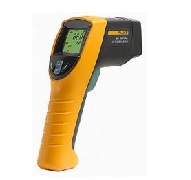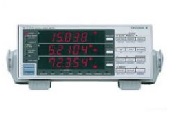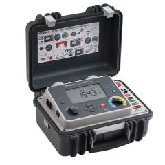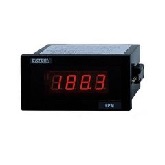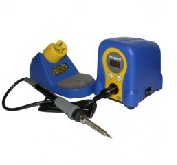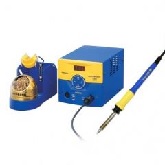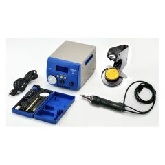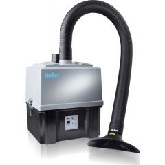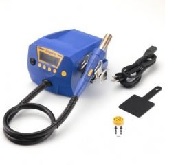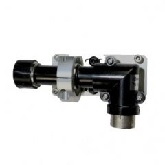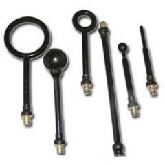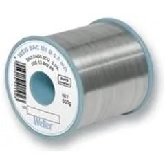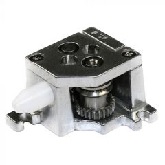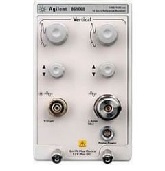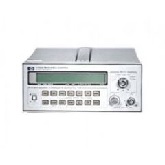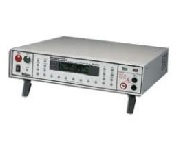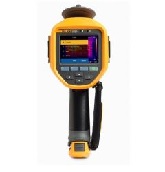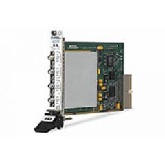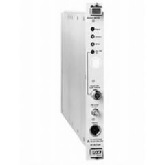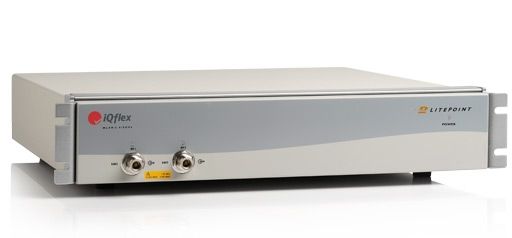Additional Features:
- Seamless analysis of DSSS (802.11b/g) and OFDM (802.11a/g/n) WLAN and Bluetooth signals
- Advanced Vector Signal Analyzer (VSA) and Vector Signal Generator (VSG) combined with the capabilities of a power meter and spectrum analyzer in a single instrument
- Operation in both 2.4 GHz and 5 GHz bands
- Baseband analog I/O facilitates product debugging (IQview)
High-performance VSA
- Wide bandwidth (60 MHz)
- Capture-Once Measure-All operation
High-performance VSG
- Pre-defined 802.11a/b/g/n and Bluetooth transmit test signals included
Simple control interfaces
- LitePoint API supports Visual C/C++ test scripts for use in manufacturing
Supported WLAN Tests
The IQflex supports key WLAN tests including:
- Phase noise (power spectral density versus time)
- CCDF (to support compression analysis)
- Spectrogram
- Frequency error versus time (to assess frequency settling)
- Variation of OFDM short training sequence (pretzel plot)
- Eye diagram
- EVM (versus OFDM subcarriers versus time)
Supported Bluetooth (1.0, 2.0, 2.1) Hardware Tests
- Analyzer
- Input frequency range
- Input power range
- Measurement Bandwidth
- Quantization
- Input Return Loss
- Spurious
- Harmonics
- Integrated Phase Noise
- Signal to Noise Ratio
- Power Measurement Accuracy
- Waveform Capture Duration
Generator
- Output frequency range
- Output power range
- Signal Bandwidth
- Quantization
- Output Return Loss
- Spurious
- Harmonics
- Integrated Phase Noise
- Signal to Noise Ratio
- Carrier leakage
- Power Accuracy
- Waveform Duration
Supported Bluetooth (1.0, 2.0, 2.1) Measurement Tests
- Measurement
- TX output power
- TX output spectrum
- 20 dB bandwidth
- Frequency deviation
- Carrier frequency Tolerance
- Carrier frequency drift
- Relative transmit Power (EDR)
- Carrier frequency stability (EDR)
- Receive sensitivity
- Bit error rate (BER)
- RMS EVM (EDR)
- Peak EVM (EDR)
VSA Performance
- All performance specified at 25°C
- All specifications apply to hardware version 1.5.7
- Frequency Baseband: 2400 - 2500 MHz; 4900 - 6000 MHz
- Analog bandwidth: 60 MHz
- Quantization: 14 bits
- Sampling frequency: 80 MHz at ADC
- Sampling resolution: 1 sample
- Waveform Capture Duration: 13 ms
- Pre-trigger capture: (220– 1) samples (~1,000,000 samples)
- Sampling filter amplitude variation: ≤ 0.25 dB (0 – 10 MHz offset frequency)
- Sampling filter group delay variation: ≤ 300 ps (0 – 10 MHz offset frequency)
RF Port
- Noise figure: ≤ 25 dB
- Input amp level (max): 2400 – 2500 MHz: +30 dBm; 4900 – 6000 MHz: +30 dBm
- Power measurement accuracy: Specification: ± 1.0 dB (for levels ≥ -50 dBm); Typical: ± 0.5 dB
Residual EVM
- VSA contribution to measurement of 802.11a/g/n OFDM signals
- Input power: ≥ -35 dBm
- Specification: ≤ -35 dB (≤ 1.78%)
- Typical: -41 dB (0.89%)
SNR
- VSA contribution to measurement of 802.11b/g DSSS signals
- Input power: ≥ -10 dBm
- 100 kHz resolution BW
- Specification: ≥ 55 dB
- Typical: 60 dB
Spurious response
- 802.11b/g DSSS signals
- Measured w.r.t. spectral mask
- out-of-band: ≤ -45 dB
- In-band: ≤ -55 dB with 100 kHz resolution BW
- Amplitude flatness: ≤ 0.2 dB (0 – 10 MHz offset frequency)
- Integrated phase noise: Typical: 0.5 degrees (100 Hz – 1 MHz) (2.4 GHz band)
- Input return loss: ≥10 dB
VSG Performance
- Frequency: 2400 - 2500 MHz; 4900 - 6000 MHz
- Analog bandwidth: 70 MHz
- Quantization: 14 bits
- Sampling frequency: 80 MHz
- Sampling resolution: 1 sample
- Waveform Duration (max.): 13 ms
- Pre-trigger capture: (220–1) samples (~1,000,000 samples)
- DAC filter amplitude variation: Typical: ≤ 0.25 dB (0 – 20 MHz offset frequency)
- DAC filter group delay variation: Typical: ≤ 400 ps (0 – 20 MHz offset frequency)
RF Port
- Output level 2400 – 2500 MHz: -95 to 0 dBm; 4900 – 6000 MHz: -95 to -10 dBm
- Output power accuracy Specification: ± 1.0 dB (0 to -95 dBm)
- Typical: ± 0.6 dB
EVM
2400 – 2500 MHz
- – 802.11a/g OFDM signals
- o ≤-38 dB (output level: -95 to -10 dBm)
- o ≤-35 dB (output level: -10 to -5 dBm)
- – 802.11b/g DSSS signals: ≤ -30 dB (output level: -95 to 0 dBm)
4900 – 6000 MHz
- – ≤ -38 dB (output level: -95 to -15 dBm)
- – ≤ -35 dB (output level: -15 to -10 dBm)
SNR
- 802.11b/g DSSS signals only
- 100 kHz resolution BW
- Specification: ≥ 55 dB
- Typical: 70 dB
- Undesired sideband: ≤-45 dBc (0.1 – 10 MHz; CW output)
- Carrier leakage: ≤ -45 dBc (CW output)
Spurious
- Specification: ≤ 50 dBc (in-band) Typical
- – ≤ -20 dBc out-of-band (harmonics)
- – ≤ -35 dBc out-of-band (non-harmonic)
- Integrated phase noise typical: 0.5 degrees (100 Hz – 1 MHz)
- Output return loss: ≥ 10 dB
The IQflex™ 802.11a/b/g/n WLAN and Bluetooth Test Solution is an all-in-one test instrument developed specifically for RF testing of 802.11a/b/g/n WLAN and Bluetooth products. Suitable for both development and manufacturing environments, the IQflex test system integrates a vector signal analyzer (VSA) and a vector signal generator (VSG) into a single instrument.
Functionality
The IQflex test system is expressly designed to test WLAN products, including network interface cards, access points, and embedded components.
The IQflex test system’s VSA capability replaces traditional spectrum analyzers and power meters, enabling the user to analyze a device under test’s transmitter output and perform true error vector magnitude (EVM) measurements. Designed to receive large input signals without distortion, the IQflex test system employs a wide-bandwidth Capture-Once Measure-All approach so that the device under test’s transmit signal is sampled and stored in a single measurement for subsequent analysis of all desired parameters resulting in reduced test times.
Similarly, the IQflex test system’s VSG capability replaces traditional golden units with a test signal source of much higher quality, allowing detailed analysis of the receiver performance of the device under test. The IQflex test system is designed to output high quality test signals over the full expected operating range of a WLAN receiver.
The IQflex test system supports testing in both the 2.4 GHz and 5 GHz frequency bands utilized worldwide for 802.11a/b/g/n and Bluetooth products. Inputs and outputs at both RF and baseband are provided, enabling detailed testing of all aspects of a WLAN product’s analog design.
A vector signal analyzer (VSA) provides matching capabilities covering identical frequency bands as the VSG. Each VSA consists of two digitizer (DIG) channels (I and Q) and associated quadrature downconverter. The VSG consists of two arbitrary waveform generator (AWG) sections and a quadrature upconverter.
Control Interfaces
To allow automated testing, the IQflex test system supports the LitePoint API, a complete command set and associated DLL files for the development of Visual C/C++ test scripts. Whether used for product characterization in the development process or for quality assurance in manufacturing, the LitePoint API supports test setup, data capture, signal analysis, and result-handling as well as general communications and error-handling functions. Because the tester control connection is Ethernet, the user can connect to the instrument from anywhere on their network, allowing seamless remote operation.
To facilitate debugging, especially in the development of test scripts with the LitePoint API, the IQflex test system is supported by the IQdebug™ Monitor and Control Tool. IQdebug is a convenient stand-alone software tool with an easy-touch graphical interface that can monitor and control the test instrument and data captures.
| Manufacturer | LitePoint |
|---|---|
| Condition | Used |


